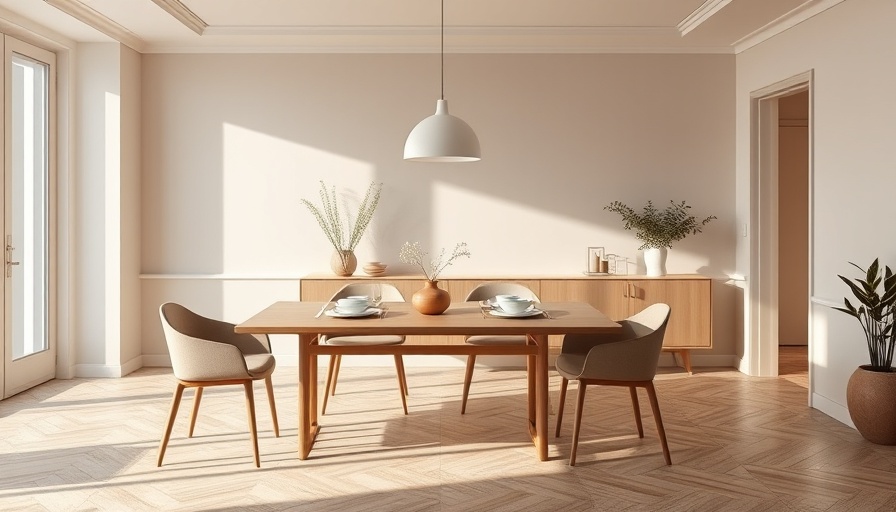
Restoring Barcelona: A Blend of Old and New
In the vibrant heart of Barcelona, an exquisite renovation of a century-old apartment has caught the attention of design enthusiasts and digital nomads alike. The local firm Sigla Studio has undertaken the delicate task of preserving the apartment's historic charm while integrating modern functionalities that cater to contemporary living. This renovation highlights the importance of maintaining a home that resonates not just with aesthetics, but also with the emotional connections tied to its rich history.
The Art of Sensitivity in Restoration
The renovation has been described as "delicate and restrained"—terms that resonate deeply within today's design ethos, especially for those seeking comfort and elegance in their remote workspaces. By carefully restoring original features such as the intricate mosaic floors and ornate moldings, Sigla Studio demonstrates a profound respect for the past. As digital nomads, understanding the impact of our surroundings on our productivity and well-being is essential, and such sensitive design fosters an inspiring environment that promotes creativity and focus.
Creating Comfortable Workspaces in Historical Settings
The integration of modern elements with the apartment's preserved details is particularly noteworthy. The designers have incorporated sympathetic modern additions that not only enhance comfort but also align with an efficient workspace layout. For digital nomads, who often work from various locations, this kind of balance is crucial. The spaces must inspire while providing the amenities necessary for productive work, ensuring that both comfort and function are prioritized.
The Emotional Connection to Our Spaces
Spaces infused with history often elicit strong emotional responses and foster a sense of belonging. For those who work remotely, creating a home office in a beautifully renovated apartment can enhance the connection to the space, motivating individuals to be more productive. Personal aesthetics intertwine with zoning for work and relaxation, transforming the workspace into a haven that is both functional and visually appealing.
Global Perspectives on Renovation
This type of sensitive renovation raises questions about how we approach changes to historical architecture globally. While some may argue for modernity over preservation, projects like this one advocate for a harmonious blend. Digital nomads might find inspiration in these projects by considering the implications of their workspace environments, whether they’re based in vibrant cities or quieter locales.
Future Trends in Residential Design
As we progress, more professionals will likely seek out spaces that hold historical significance. This trend speaks not only to the desire for unique aesthetics but also to a larger movement toward sustainability—by reimagining existing structures instead of constructing anew. Such insights not only inform design choices but can also direct the efforts of digital nomads in their setups, urging a commitment to valuing historical contexts within their workspaces.
In summary, the renovation of this Barcelona apartment serves as a powerful reminder of how our living spaces shape our experiences. It underscores the significance of creating work environments that resonate with comfort, inspiration, and emotional connections, revealing the potential of historical architecture as functional yet beautiful workplaces.
 Add Row
Add Row  Add
Add 




Write A Comment